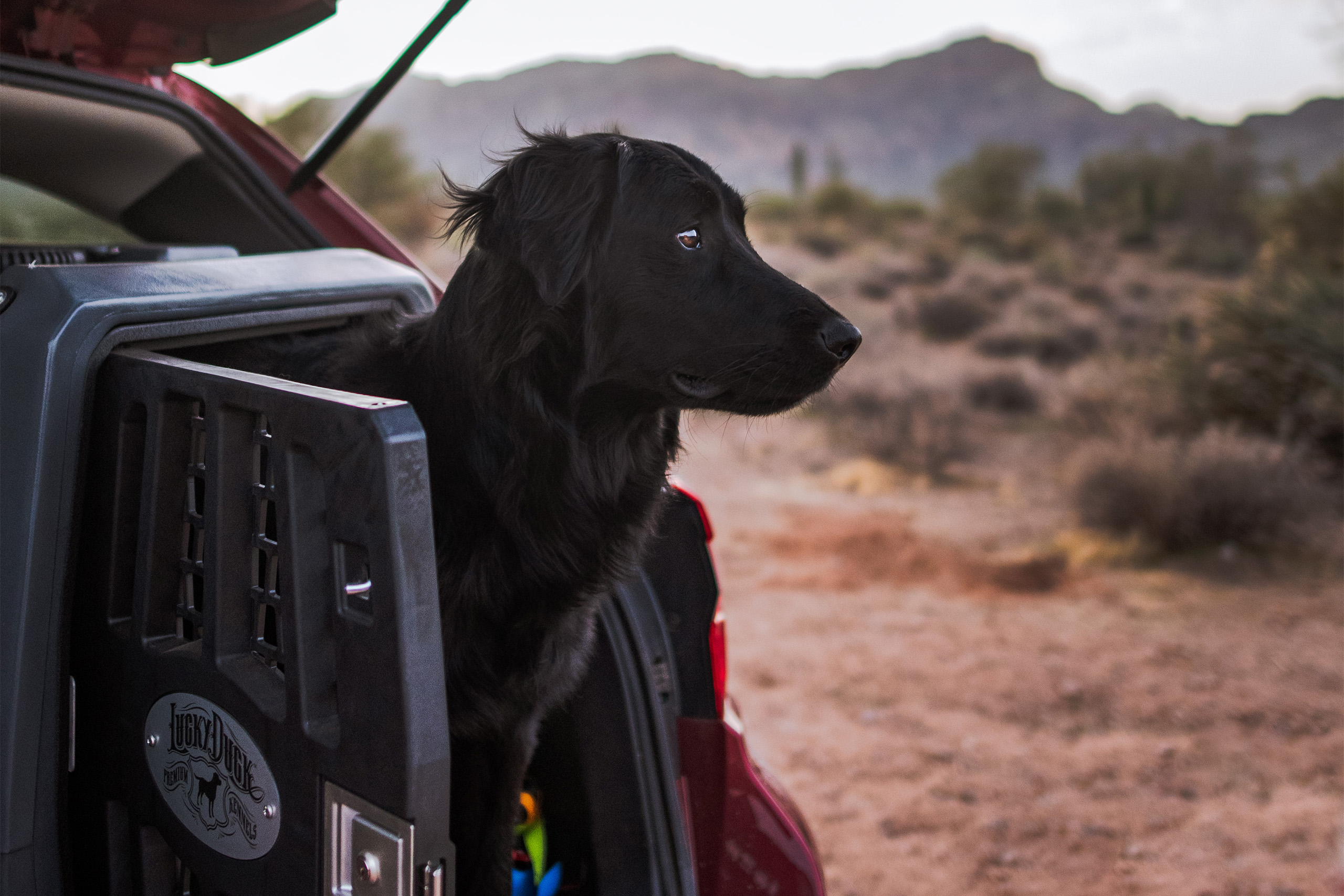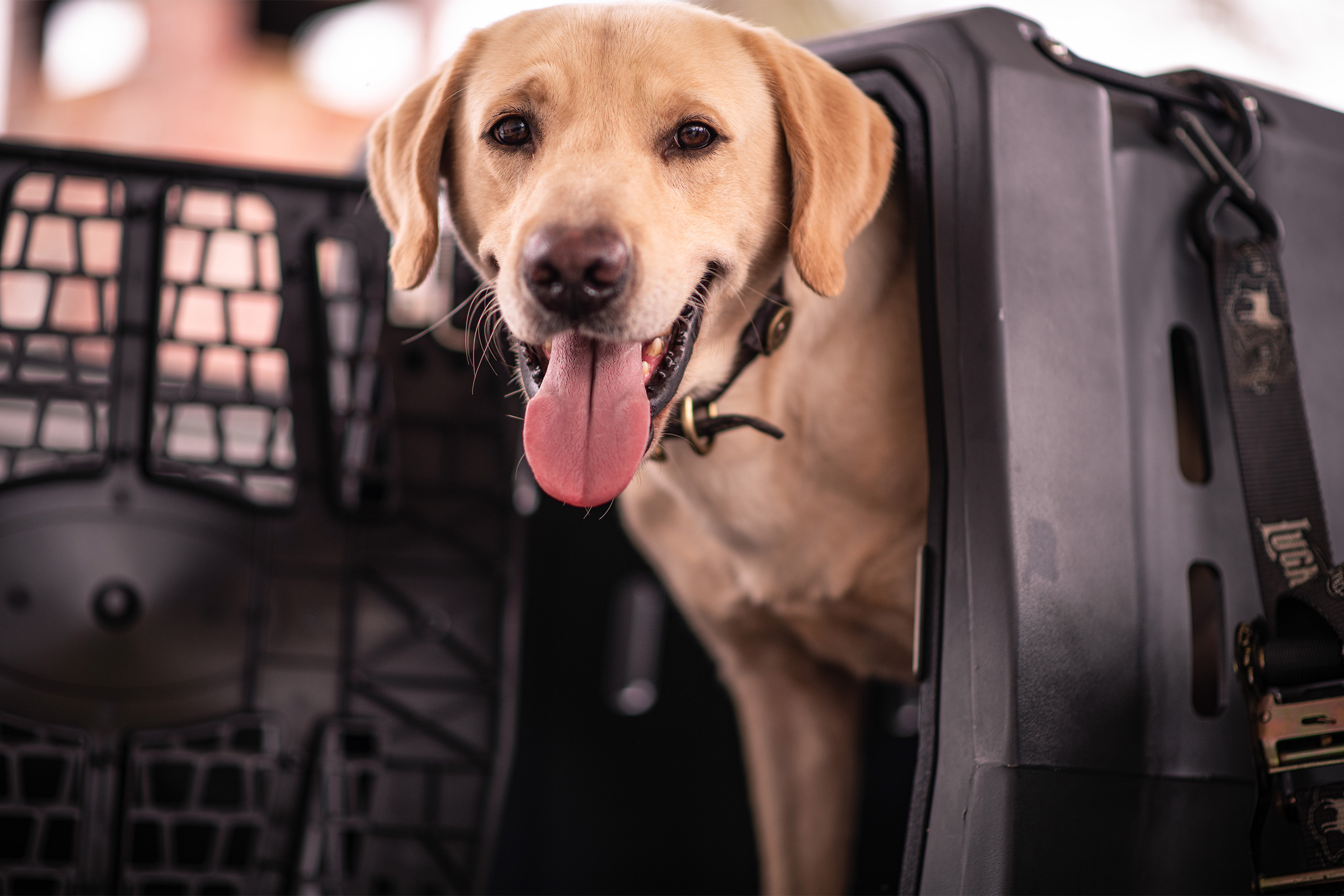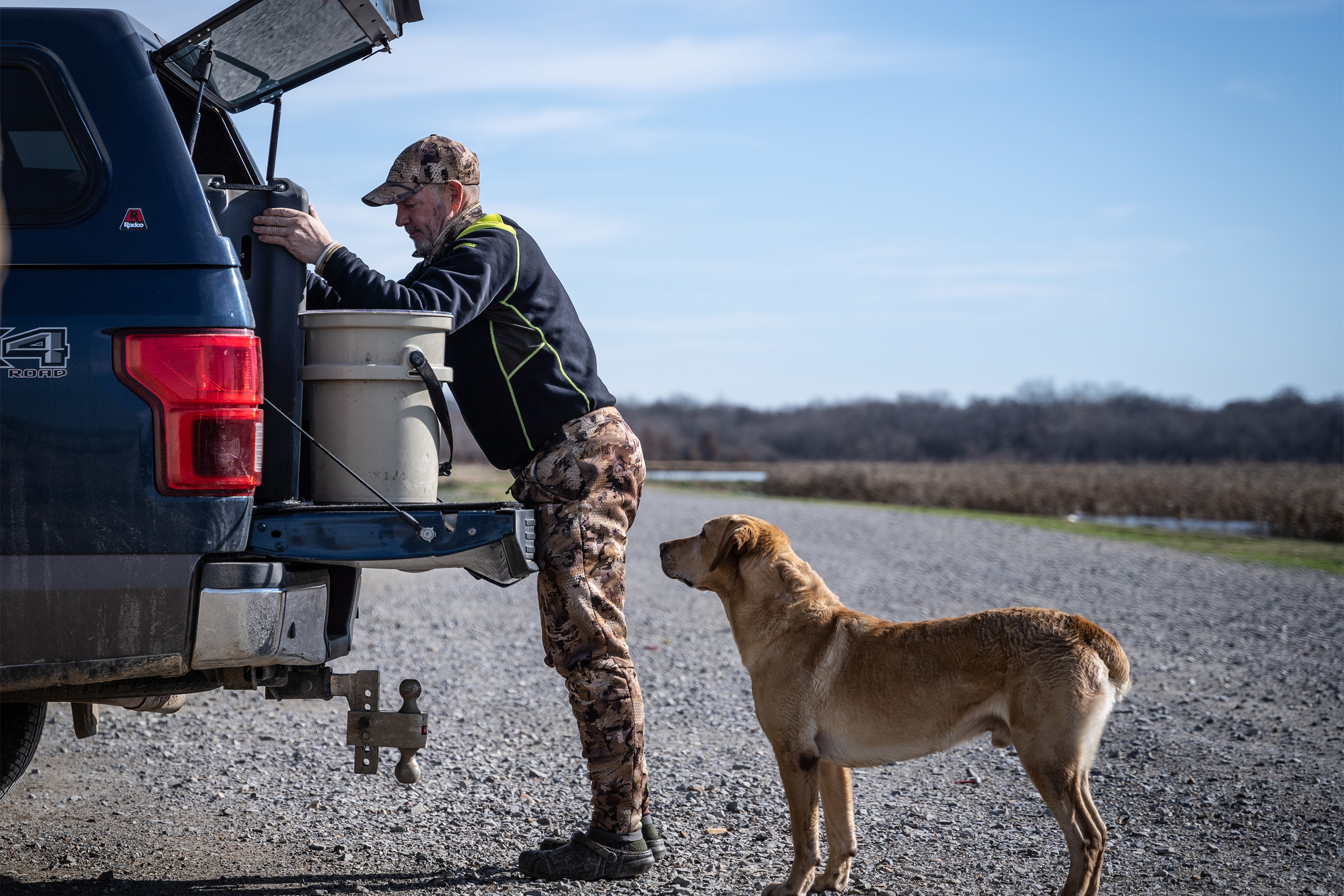How to Train Your Dog to Hike With You
Posted by Lucky Duck Team on Nov 5th 2024
Why Hiking with Your Dog is a Great Adventure
Hiking with your dog offers a unique way to deepen the bond between you and your canine companion while enjoying the beauty of nature. Whether you’re navigating rugged trails or walking through serene forests, bringing your dog along adds a layer of companionship and excitement to the adventure.
Additionally, hiking with your dog can serve as a great fitness routine for both of you, helping to maintain an active lifestyle. Whether your dog is a high-energy breed that needs a lot of physical activity or a more laid-back companion who enjoys leisurely walks, tailoring the hike to your dog’s abilities ensures that both of you enjoy the experience.
Overall, hiking with your dog isn’t just about exercise; it’s about experiencing the great outdoors together, creating memories, and strengthening the connection you share.

Loose Leash Walking: Keeping Your Dog Safe on the Trail
One of the most important skills to teach your dog before hitting the trails is loose leash walking. Most hiking areas require dogs to be on a leash, and even where off-leash hiking is allowed, it’s crucial to have control of your dog at all times. Loose leash walking ensures that your dog doesn’t pull or drag you around, making your hike more enjoyable and safe for both of you.
To teach loose leash walking, start in a calm environment with minimal distractions, such as your backyard or a quiet street. The goal is to train your dog to walk at your pace without pulling. Keep your dog close but not necessarily in a strict “heel” position—just ensure they aren’t forging ahead or lagging behind.
Once your dog masters the basics, gradually introduce distractions like other people, animals, or objects to simulate the situations you might encounter on a hike. As you increase distractions, reward your dog for staying focused and keeping pace. This method ensures that, even when faced with exciting stimuli on the trail—like wildlife or other hikers—your dog remains controlled and safe.
Good leash control on trails with uneven ground or obstacles is essential, as you don’t want your dog pulling you into tricky spots or becoming injured. A well-trained dog that walks politely on a loose leash allows you to navigate rocky terrain, streams, and other obstacles without the added stress of being dragged or jerked around.
Pacing Cues and Adjusting Your Dog’s Speed
Hiking presents different challenges than a typical walk around the neighborhood. Trails often have uneven ground, obstacles, and varied terrain, which can cause your dog to naturally move at a different pace than you. This is where pacing cues come into play. Teaching your dog verbal cues like "easy" to slow down or "let’s go" to pick up the pace helps you maintain control and prevent accidents, especially when navigating difficult terrain.
Start introducing pacing cues during your daily walks by giving a command before you change your walking speed. For example, if you want your dog to slow down, say “easy” as you gradually reduce your speed, and reward your dog when they adjust. Similarly, you can use a command like “let’s go” when you want your dog to speed up. Consistently using these commands helps your dog understand what’s expected and allows you to manage your hike more comfortably.
On trails with steep inclines, narrow paths, or rough terrain, these cues are incredibly useful in ensuring your dog doesn’t rush ahead and pull you off balance. Similarly, if you’re hiking on a smooth, flat trail, you may want your dog to speed up to match your pace, especially when covering longer distances.
Incorporating pacing cues into your hiking routine allows for a smoother, more enjoyable experience for both you and your dog, regardless of the trail’s difficulty.

Focus Work and Handling Distractions
One of the biggest challenges when hiking with your dog is managing distractions. From squirrels darting across the path to other hikers passing by, the outdoors is full of exciting stimuli that can pull your dog’s attention away from you. This is where focus work comes into play. Teaching your dog commands like “watch me” and “touch” helps redirect their attention back to you when distractions arise, ensuring they stay safe and under control.
To start, practice focus work in a low-distraction environment, like your home or backyard. Use the “watch me” command by holding a treat close to your face and encouraging your dog to make eye contact with you. Reward them when they do. Gradually increase the level of distractions, from mild diversions like other people walking by to more tempting stimuli like animals or toys. The goal is to train your dog to ignore external distractions and focus on you when commanded.
Another great focus tool is teaching your dog to “touch” by having them press their nose to your palm. This can help when you need to guide your dog away from potential hazards or keep them by your side when other animals or hikers approach.
Safety Cues and Keeping Your Dog Away from Hazards
The trail is full of potential hazards, from poisonous plants to discarded trash, and ensuring your dog stays safe requires teaching them solid safety cues. Commands like “leave it” and “drop it” are essential in preventing your dog from picking up or eating something dangerous.
The “leave it” command tells your dog to ignore something completely, whether it’s an animal carcass, another dog, or food left behind by other hikers. Start training this cue by placing a low-value item, like a piece of kibble, on the floor. As your dog approaches the item, say “leave it” and reward them with a special treat when they ignore the kibble. Over time, increase the temptation by introducing higher-value items and practicing in environments with more distractions, like the backyard or park.
The “drop it” command is used when your dog has already picked something up. Whether it’s a stick, trash, or something potentially harmful, you want to ensure your dog can immediately drop it when asked. Practice this by offering your dog a toy or treat, then say “drop it” and offer a higher-value treat as a trade when they release the item. This positive reinforcement teaches your dog to willingly let go of items in their mouth.
Both cues are crucial for ensuring your dog’s safety on the trail. They allow you to keep them away from hazards and give you peace of mind that you can intervene before they get into something harmful.
Teaching Recall and Ensuring Your Dog Stays Close and Safe
A strong recall command is vital when hiking with your dog, especially if you’re in an area where off-leash hiking is allowed. Recall ensures that your dog will come back to you immediately, no matter the distraction, which is critical for their safety in the wilderness.
Start teaching recall in a controlled environment with minimal distractions. Use a high-value reward, like your dog’s favorite treat or toy, and call them to you using a cheerful tone and a word like “come” or “here.” When they come to you, reward them generously. Gradually increase the difficulty by adding distractions and practicing in more open areas, like parks or fields. Make recall training fun by turning it into a game—try hide-and-seek or practice with multiple people to make the activity engaging for your dog.
It’s important to never punish your dog for coming to you, even if they were slow to respond or did something wrong before. Negative consequences will teach your dog that coming when called can result in punishment, making them less likely to return in the future. Instead, make every recall a positive experience with plenty of praise and rewards.
A reliable recall is essential for keeping your dog safe, especially in unpredictable outdoor environments where they might encounter wildlife or hazardous terrain. With consistent training, you can ensure your dog will return to your side whenever called, keeping them safe and within sight at all times.

Off-Leash Readiness and How to Know if Your Dog Can Handle the Freedom
Allowing your dog to hike off-leash can offer them the freedom to explore and enjoy the trail, but it’s not something to take lightly. Before granting your dog this freedom, it’s important to evaluate their off-leash readiness. Key factors include your dog’s recall reliability, their ability to stay focused around distractions, and your confidence in their trail manners.
To test your dog’s readiness, start by practicing off-leash in a controlled environment like a fenced yard or an empty park. Make sure they can respond to commands, particularly recall cues like “come” or “here,” without hesitation, regardless of what’s happening around them. Your dog should be able to stay within sight and consistently return to you when called, even when they see wildlife or other hikers.
In addition to recall, you should consider your dog’s temperament. Dogs that are prone to chasing animals or that have high prey drives may not be suited for off-leash hiking in areas with wildlife. Your dog must also show restraint in interacting with other hikers and their pets, ensuring they won’t disrupt or scare others on the trail.
Before venturing off-leash, check local regulations as many trails require dogs to be leashed for safety reasons and to protect wildlife.
Traveling Safely to Your Hiking Area with Your Dog
Lucky Duck’s crash-rated dog kennels are an excellent choice for outdoor enthusiasts who want to keep their dog safe on the road. Designed to withstand the forces of a crash, these kennels offer unmatched durability and protection. Built with high-quality materials, they’re made for road trips, and we provide accessories also to ensure your dog is comfortable and secure the entire time.
In addition to safety, these kennels are easy to transport, making them an ideal kennel for any outdoor adventure you can drive to. With plenty of ventilation and space for your dog to relax, you can focus on the road knowing your dog is traveling safely.
Investing in a crash-rated kennel like those from Lucky Duck isn’t just about convenience—it’s about protecting your furry companion and ensuring they arrive at the trailhead ready to hike by your side.
Ready to Hit the Trail with Your Canine Companion?
Hiking with your dog can be an incredibly rewarding experience, but preparation is key to ensuring both you and your dog stay safe and comfortable. And when it’s time to hit the road, don’t forget to travel safely with Lucky Duck’s crash-rated dog kennels, designed to provide maximum protection for your canine companion. Explore Lucky Duck’s Dog Kennels and get ready for your next hiking trip!
